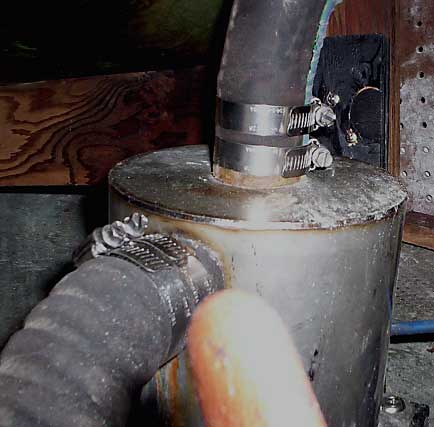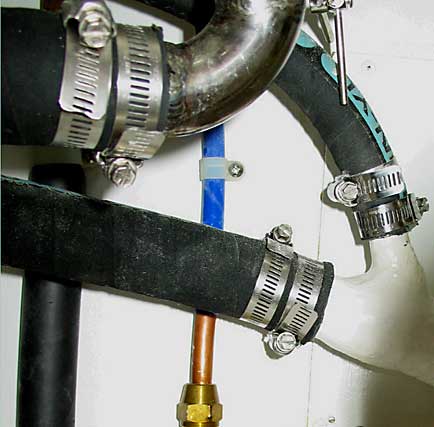"The purpose of double clamping is to provide a "secure, liquid and vapor-tight joint." Placing the "knuckle" of each clamp on the same side technically meets the requirement of double clamping but misses the purpose. A hose clamp provides the most tightening from the centerline toward the knuckle. It is best to place the knuckles on opposing sides, thus providing the most tightening force equally on both sides of the clamped hose. I have been involved in cases of carbon monoxide migration, caused by back pressure, through improper clamping. Since you’re putting two clamps on anyway, why not do it right?" – Scott Schoeler, MKIII, Scot-Free
Accordingly the first photo, of an Atomic 4's waterlift muffler, is wrong and should be changed. The second photo shows a correct installation.



